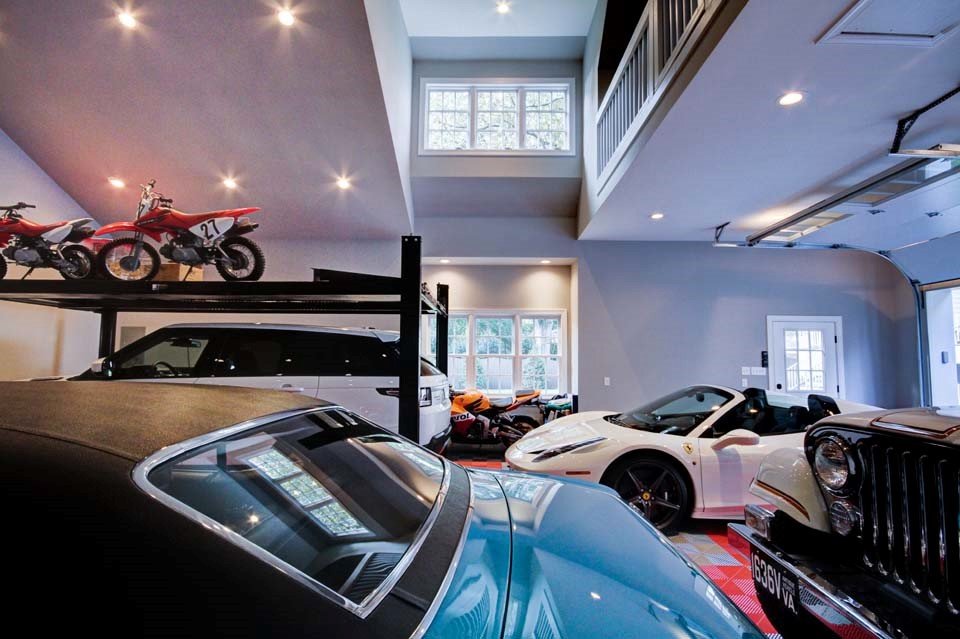Table of Contents Show
In-home garages are multi-purpose garages for parking cars, storage, and for doing several projects. They require a good lighting setup as they are dimly lit, and it’s hard to navigate around them, find important stuff or carry out any of the tasks.

Here are 10 tips to improve your garage lighting
1. Use a Layout Design
Take measurements of the garage because the garage area per square feet and ceiling height determine the suitable fixture for your indoor garage.
The layout design determines the number of lumens required per square feet. Fifty lumens per square feet are ideal for ambient lighting, whereas 300 lumens per square feet are suitable for task lighting.
Read Also:
2. Choose Lights According to Layout
The garage’s build determines the fixture suitable for use on different ceilings like sloped ceilings, remodelled ceiling, etc. most garages comply with suspended light fixtures or ceiling mount fixtures for general lighting.
3. Choose Functional Fixture
Functional fixtures are those kinds of fixtures which attenuate the energy required to produce light and focus on delivering quality light with versatility because of their design based features.
The fixtures specifically for light layering are essential and save up quite the cost as garages are outdoor units, which require lights rarely.
4. Use Overhead Garage Lights
The garage, either big or small, requires proper illumination. Overhead LED garage lights provide general illumination while taking up less visual space, and they are bright enough to help navigation around the garage easier.
5. Use of High Bays
High bay light fixtures are powerful light fixtures that provide bright glare-free light suitable for workshop garages with ceiling height above 20 feet. High bay light fixtures are available in both linear and round shapes, making them a good fit.
They are powerful and durable; they subsequently require fewer institutions as compared to other ceiling mount options.
6. Use LED Tubes
Led tubes are a very economical replacement of T8 fluorescent fixtures; these linear light fixtures are to retrofit ceiling lights for bright, general illumination. These lights are durable, more efficient and save up electrical costs.
7. Use Portable Lights for Task Lighting
Portable lights that can suspend from the ceiling around the task area are relatively inexpensive and efficient. They can hang from the top to cast bright, focused light for as long as needed. These fixtures have hook mounts to carry them anywhere and are very durable.
8. Accent Light for Storage Area
For storage racks, accent lighting is essential to make it easier to navigate the garage and enhance visibility as accent lights shine directly on the showcase or storage shelf. For example, a pendant light hangs now above a decorative display.
9. Motion Sensor Lights for Garage Doors
Motion sensors connected to garage lights automatically shut off the sunshine after a specific time and light up as soon as it detects motion. This is essential as a garage does not require light 24/7, and this feature also reduces electricity consumption.
10. Use Wall Lights Along with Ceiling Lights
Wall lights are auxiliary lights for extra lighting, i.e. for specific tasks that are detail-oriented. Wall lights are small fixtures with separate switches; they are glare free to light up a small area where you can carry out any work easily without needing extra lights.
Conclusion
Garage lighting setup requires a proper setup, and layering the light is essential. Lighting is a significant factor regardless of any space; it is crucial for security and comfort.
Light fixtures suitable for task lights with good CRI rating and colour temperature while being integrated with motion sensors increase the task’s compliance and efficiency.









